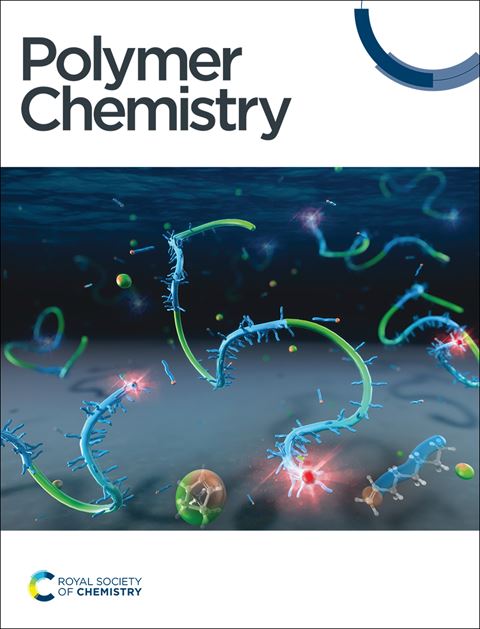Harnessing Ene Type and Stereochemistry to Control Reaction Kinetics and Network Architecture in Thiol-Ene Photopolymerization Using Maleate and Fumarate–Derived Monomers
IF 4.1
2区 化学
Q2 POLYMER SCIENCE
引用次数: 0
Abstract
Understanding how chemical reaction mechanisms prescribe network architecture and the resulting properties is key to applications across fields. Herein we report photo-dose tunable crosslinking density in fully formed polymer networks by exploiting the relative rates of thiol-ene click chemistry and chain-growth homopolymerization in symmetric triene monomers. Synthesized via one-step functionalization of biomass-derived diacids, these trienes incorporate terminal allyl ether groups and internal fumarate/maleate groups for varying reactivity. Through small-molecule addition with monothiol, 1H-NMR results indicate fast preferential thiol addition to terminal allyl groups and slower stereochemistry-dependent homopolymerization of fumarate/maleate groups. Incorporating these monomers with dithiol and triallyl crosslinker allowed formation of polymer networks, using both thiol-ene addition and homopolymerization as photo-crosslinking mechanisms on differing timescales. In-situ photorheology and dynamic mechanical analysis demonstrate impacts of the mixed-mechanism on light-dependent evolution of network architecture from initial gelation to increasing crosslinking density with prolonged exposure. Ultimately, the mixed-mechanism polymerization enables grayscale patterning and 3D printing, offering potential for in situ patterning of glassy and rubbery regions in monolithic materials.求助全文
约1分钟内获得全文
求助全文
来源期刊

Polymer Chemistry
POLYMER SCIENCE-
CiteScore
8.60
自引率
8.70%
发文量
535
审稿时长
1.7 months
期刊介绍:
Polymer Chemistry welcomes submissions in all areas of polymer science that have a strong focus on macromolecular chemistry. Manuscripts may cover a broad range of fields, yet no direct application focus is required.
 求助内容:
求助内容: 应助结果提醒方式:
应助结果提醒方式:


